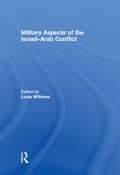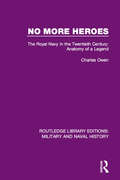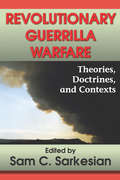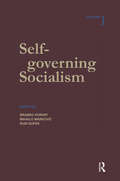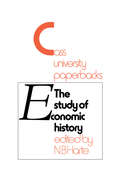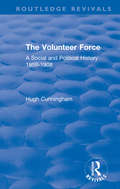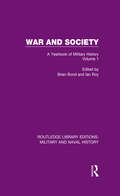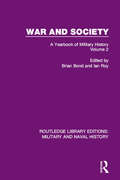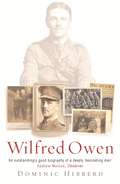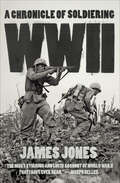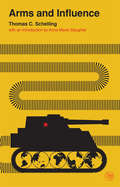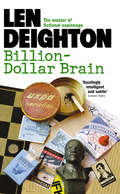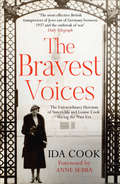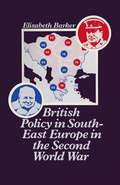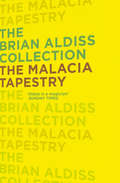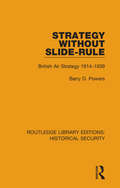- Table View
- List View
Military Aspects of the Israeli-Arab Conflict
by Louis WilliamsThe Arab-Israeli conflict is fraught with political complexity. It entails long-standing, entrenched views on the part of all the participants, direct and indirect, and is heavily charged with emotion. It is a subject of great political and military actuality. The Middle East is fast becoming a testing ground for modern weapons systems and for modern, conventional war doctrines, a recent example being the Yom Kippur War.Most publications - articles, papers, books - on the war were produced while sentiments were still high and the armies still formulating their conclusions. Confusion, controversy, and emotions eclipsed clarity.
Military Aspects of the Israeli-Arab Conflict
by Louis WilliamsThe Arab-Israeli conflict is fraught with political complexity. It entails long-standing, entrenched views on the part of all the participants, direct and indirect, and is heavily charged with emotion. It is a subject of great political and military actuality. The Middle East is fast becoming a testing ground for modern weapons systems and for modern, conventional war doctrines, a recent example being the Yom Kippur War.Most publications - articles, papers, books - on the war were produced while sentiments were still high and the armies still formulating their conclusions. Confusion, controversy, and emotions eclipsed clarity.
No More Heroes: The Royal Navy in the Twentieth Century: Anatomy of a Legend (Routledge Library Editions: Military and Naval History)
by Charles OwenThis book, originally published in 1975 and authored by an ex-Naval officer, assesses the performance and management of the Royal Navy in the twentieth century. It examines the nature and tasks of the twentieth century Navy, by tracing the fortunes of it under successive First Sea Lords. It examines how the higher echelons of the service have altered and how and why naval policy has changed. Among other issues the book discusses the actions of Beresford and Fisher, Beaty and Jellifcoe, Chatfield, Pound and Mountbatten. It appraises Churchill, the Invergordon Mutiny and the strains fo the 1930s; discusses the Navy’s role in two World Wars and post-war disarmament.
No More Heroes: The Royal Navy in the Twentieth Century: Anatomy of a Legend (Routledge Library Editions: Military and Naval History)
by Charles OwenThis book, originally published in 1975 and authored by an ex-Naval officer, assesses the performance and management of the Royal Navy in the twentieth century. It examines the nature and tasks of the twentieth century Navy, by tracing the fortunes of it under successive First Sea Lords. It examines how the higher echelons of the service have altered and how and why naval policy has changed. Among other issues the book discusses the actions of Beresford and Fisher, Beaty and Jellifcoe, Chatfield, Pound and Mountbatten. It appraises Churchill, the Invergordon Mutiny and the strains fo the 1930s; discusses the Navy’s role in two World Wars and post-war disarmament.
Revolutionary Guerrilla Warfare: Theories, Doctrines, and Contexts
by Sam C. Sarkesian'Revolution' is a word that causes fear in some, exhilaration in others, and confusion in most. Originally used to describe a restoration, it eventually came to mean a sweeping, sudden attack on an existing order. Human history has borne witness to a variety of national and social revolutions - population revolution, revolution of ideas, technological revolution, and revolution in education. Simultaneously, there has been a proliferation of literature on revolution, armed struggle, and violence aimed at unseating policies and leadership of governments and societies.Revolutionary struggles are more than simply armed internal conflict; they involve the essence of the political system. The desire to make such phenomena understandable often leads to oversimplification. Attempts to encompass their multi-dimensional nature, on the other hand, can become immersed in complexities, ambiguities, and misinterpretations. The perspective of this classic volume, available in paperback for the first time, is that revolution is here to stay. Guerrilla warfare, according to Sarkesian, is a particularly useful strategy for the weak, the frustrated, the alienated, and seekers of power against existing regimes. The collected works in this volume examine the social roots of revolution, development of strategy and tactics, practice in city and countryside, dilemmas of attackers and defenders.The actors and thinkers collected and analyzed here range from leading political analysts, anthropologists, sociologists, historians, and officials as well as practitioners of guerrilla warfare. This core text with primary sources in the area of war, revolution, and insurgence develops an understanding of revolution, traces the growth of guerilla doctrine, and studies the specifics of revolutionary and counterrevolutionary guerilla warfare.
Revolutionary Guerrilla Warfare: Theories, Doctrines, and Contexts
by Sam C. Sarkesian'Revolution' is a word that causes fear in some, exhilaration in others, and confusion in most. Originally used to describe a restoration, it eventually came to mean a sweeping, sudden attack on an existing order. Human history has borne witness to a variety of national and social revolutions - population revolution, revolution of ideas, technological revolution, and revolution in education. Simultaneously, there has been a proliferation of literature on revolution, armed struggle, and violence aimed at unseating policies and leadership of governments and societies.Revolutionary struggles are more than simply armed internal conflict; they involve the essence of the political system. The desire to make such phenomena understandable often leads to oversimplification. Attempts to encompass their multi-dimensional nature, on the other hand, can become immersed in complexities, ambiguities, and misinterpretations. The perspective of this classic volume, available in paperback for the first time, is that revolution is here to stay. Guerrilla warfare, according to Sarkesian, is a particularly useful strategy for the weak, the frustrated, the alienated, and seekers of power against existing regimes. The collected works in this volume examine the social roots of revolution, development of strategy and tactics, practice in city and countryside, dilemmas of attackers and defenders.The actors and thinkers collected and analyzed here range from leading political analysts, anthropologists, sociologists, historians, and officials as well as practitioners of guerrilla warfare. This core text with primary sources in the area of war, revolution, and insurgence develops an understanding of revolution, traces the growth of guerilla doctrine, and studies the specifics of revolutionary and counterrevolutionary guerilla warfare.
Self-governing Socialism: A Reader
by Branko HorvatFirst published in 1975. VOLUME ONE covers Historical Development Social and Political Philosophy. No study or collection of material approaching self-government as a worldwide phenomenon and dealing with all The purpose of the present Reader is to fill this gap. This Reader traces the development self-government as a worldwide phenomenon and dealing with all This Reader traces the development of self-government from its beginnings as an apparently utopian idea of a handful of visionaries a century and a half ago to its implementation on a national scale in the contemporary world. All fundamental aspects of this development are dealt with—historical, philosophical, sociological, political, and economic. Contributions from some twenty countries are included. Several synthetic papers have been written especially for this book; because of their inclusion, as well as the comprehensiveness of the book’s coverage, this work transcends the usual confines of a reader.The edtiors’ goal was to assemble all important contributions of historical and theoretical value in one book.
Self-governing Socialism: A Reader
by Branko HorvatFirst published in 1975. VOLUME ONE covers Historical Development Social and Political Philosophy. No study or collection of material approaching self-government as a worldwide phenomenon and dealing with all The purpose of the present Reader is to fill this gap. This Reader traces the development self-government as a worldwide phenomenon and dealing with all This Reader traces the development of self-government from its beginnings as an apparently utopian idea of a handful of visionaries a century and a half ago to its implementation on a national scale in the contemporary world. All fundamental aspects of this development are dealt with—historical, philosophical, sociological, political, and economic. Contributions from some twenty countries are included. Several synthetic papers have been written especially for this book; because of their inclusion, as well as the comprehensiveness of the book’s coverage, this work transcends the usual confines of a reader.The edtiors’ goal was to assemble all important contributions of historical and theoretical value in one book.
Study of Economic History: Collected Inaugural Lectures 1893-1970
by N. B. HartePublished in the year 1975, Study of Economic History is a valuable contribution to the field of Military and Strategic Studies.
Study of Economic History: Collected Inaugural Lectures 1893-1970
by N. B. HartePublished in the year 1975, Study of Economic History is a valuable contribution to the field of Military and Strategic Studies.
The Volunteer Force: A Social and Political History 1859-1908 (Routledge Revivals)
by Hugh CunninghamOriginally published in 1975, The Volunteer Force is a study of the part-time military force which came into being to meet the mid-nineteenth century fear of French invasion. It survived and grew for fifty years until in 1908 it was renamed and remodelled as the Territorial Force. Composed initially of middle-class and often middle-aged gentlemen who elected their own officers and paid for their own equipment, the Volunteer Force soon became youthful and working-class, with appointed middle-class officers, a Government subsidy, and a minor military role as an adjunct to the Regular Army. This book examines the origins of the Force, the transformation in its social composition, the difficulties in finding officers who were ‘gentlemen’, the ambiguous status, of the Force both in the local community and in the Regular Army, and the political influence which the Force exerted in the early twentieth century. Above all it is concerned with the reasons for and the implications of enrolment; publicists argued that the Force was the embodiment of patriotism, and an indication of working-class loyalty to established institutions.
The Volunteer Force: A Social and Political History 1859-1908 (Routledge Revivals)
by Hugh CunninghamOriginally published in 1975, The Volunteer Force is a study of the part-time military force which came into being to meet the mid-nineteenth century fear of French invasion. It survived and grew for fifty years until in 1908 it was renamed and remodelled as the Territorial Force. Composed initially of middle-class and often middle-aged gentlemen who elected their own officers and paid for their own equipment, the Volunteer Force soon became youthful and working-class, with appointed middle-class officers, a Government subsidy, and a minor military role as an adjunct to the Regular Army. This book examines the origins of the Force, the transformation in its social composition, the difficulties in finding officers who were ‘gentlemen’, the ambiguous status, of the Force both in the local community and in the Regular Army, and the political influence which the Force exerted in the early twentieth century. Above all it is concerned with the reasons for and the implications of enrolment; publicists argued that the Force was the embodiment of patriotism, and an indication of working-class loyalty to established institutions.
War and Society Volume 1: A Yearbook of Military History (Routledge Library Editions: Military and Naval History)
by Brian Bond Ian RoyOriginally published in 1975, this volume filled a gap in existing scholarship by providing a comprehensive group of essays on the historical study of war and armed forces and their relationship with society. These volumes include articles ranging from the Renaissance to the era of total war.
War and Society Volume 1: A Yearbook of Military History (Routledge Library Editions: Military and Naval History)
by Brian Bond Ian RoyOriginally published in 1975, this volume filled a gap in existing scholarship by providing a comprehensive group of essays on the historical study of war and armed forces and their relationship with society. These volumes include articles ranging from the Renaissance to the era of total war.
War and Society Volume 2: A Yearbook of Military History (Routledge Library Editions: Military and Naval History)
by Brian Bond Ian RoyOriginally published in 1977, this volume filled a gap in existing scholarship by providing a comprehensive group of essays on the historical study of war and armed forces and their relationship with society. These volumes include articles ranging from the Renaissance to the era of total war.
War and Society Volume 2: A Yearbook of Military History (Routledge Library Editions: Military and Naval History)
by Brian Bond Ian RoyOriginally published in 1977, this volume filled a gap in existing scholarship by providing a comprehensive group of essays on the historical study of war and armed forces and their relationship with society. These volumes include articles ranging from the Renaissance to the era of total war.
Wilfred Owen: A New Biography (Writers And Their Work Ser. #No. 246)
by Dominic HibberdThe definitive biography of the war poet - 'Dominic Hibberd has probably done more more than any other individual to illuminate Owen's life and work. His new Life is a triumph ... it is difficult to believe it will ever be superseded' Mark Bostridge, The Independent on SundayWhen Wilfred Owen died in 1918 aged 25, only five of his poems had been published. Yet he became one of the most popular poets of the 20th century. For decades his public image was controlled by family and friends, especially his brother Harold who was terrified anyone might think Wilfred was gay. In recent years much new material has become available. This book, based on over thirty years of wide-ranging research, brings new information to almost every part of Owen's life. Owen emerges as a complex, fascinating and often endearing character with an intense delight in being alive.
WWII: A Chronicle of Soldiering
by James JonesIn 1975, James Jones—the American author whose novels From Here to Eternity and The Thin Red Line had made him the preeminent voice of the enlisted man in World War II—was chosen to write the text for an oversized coffee table book edited by former Yank magazine art director Art Weithas and featuring visual art from World War II. The book was a best seller, praised for both its images and for Jones’s text, but in subsequent decades the artwork made it impossible for the book to be reproduced in its original form, and it fell out of print and was forgotten. This edition of WWII makes available for the first time in more than twenty years Jones’s stunning text, his only extended nonfiction writing on the war that defined his generation. Moving chronologically and thematically through the complex history of the conflict, Jones interweaves his own vivid memories of soldiering in the Pacific—from the look on a Japanese fighter pilot’s face as he bombed Pearl Harbor, so close that Jones could see him smile and wave, to hitting the beach under fire in Guadalcanal—while always returning to resounding larger themes. Much of WWII can be read as a tribute to the commitment of American soldiers, but Jones also pulls no punches, bluntly chronicling resentment at the privilege of the officers, questionable strategic choices, wartime suffering, disorganization, the needless loss of life, and the brutal realization that a single soldier is ultimately nothing but a replaceable cog in a heartless machine. As the generation that fought and won World War II leaves the stage, James Jones’s book reminds us of what they accomplished—and what they sacrificed to do so.
Arms and Influence (Veritas Paperbacks)
by Thomas C. Schelling"This is a brilliant and hardheaded book. It will frighten those who prefer not to dwell on the unthinkable and infuriate those who have taken refuge in stereotypes and moral attitudinizing."—Gordon A. Craig, New York Times Book Review Originally published more than fifty years ago, this landmark book explores the ways in which military capabilities—real or imagined—are used, skillfully or clumsily, as bargaining power. Anne-Marie Slaughter’s new introduction to the work shows how Schelling’s framework—conceived of in a time of superpowers and mutually assured destruction—still applies to our multipolar world, where wars are fought as much online as on the ground.
Billion-Dollar Brain
by Len DeightonThe classic spy thriller of lethal computer-age intrigue and a maniac’s private cold war, featuring the same anonymous narrator and milieu of The IPCRESS File.
The Bravest Voices: The Extraordinary Heroism Of Sisters Ida And Louise Cook During The Nazi Era (Mira Ser.)
by Ida Cook'A breathtaking story' Daily Mail ‘Extraordinary’ The Telegraph on the Cook sisters Desperate circumstances can cause ordinary women to achieve extraordinary things.
British Policy in South East Europe in the Second World War (Studies in Russian and East European History and Society)
by Elisabeth BarkerThe Malacia Tapestry (The Brian Aldiss Collection)
by Brian AldissIn Malacia, a city where change is forbidden and radical ideas are crushed, a war like no other is about to commence. The Brian Aldiss collection includes over 50 books and spans the author’s entire career, from his debut in 1955 to his more recent work.
Strategy Without Slide-Rule: British Air Strategy 1914–1939 (Routledge Libary Editions: Historical Security)
by Barry D. PowersThe early history of British aerial defence development is one of misdirection and delusion. The misdirection, judging by the criteria of successful aerial defence in World War II, was primarily in the downgrading of home defence measures including the fighter plane. The delusion, again judging by Britain’s efforts in that second world war, was primarily in the assumption of the effects to be obtained by strategic bombing. In both cases, the First World War was a major catalyst. Although events and writings before that war indicate the coming patterns, it was during that war that a great amount of the patterns are well established. Originally published in 1976, this work explores these origins and stresses the interaction between various diverse segments of English society in the formation of the major patterns. The working out of these patterns in the first half of the interwar years is also analysed, again with respect to diverse groupings in Britain.
Strategy Without Slide-Rule: British Air Strategy 1914–1939 (Routledge Libary Editions: Historical Security)
by Barry D. PowersThe early history of British aerial defence development is one of misdirection and delusion. The misdirection, judging by the criteria of successful aerial defence in World War II, was primarily in the downgrading of home defence measures including the fighter plane. The delusion, again judging by Britain’s efforts in that second world war, was primarily in the assumption of the effects to be obtained by strategic bombing. In both cases, the First World War was a major catalyst. Although events and writings before that war indicate the coming patterns, it was during that war that a great amount of the patterns are well established. Originally published in 1976, this work explores these origins and stresses the interaction between various diverse segments of English society in the formation of the major patterns. The working out of these patterns in the first half of the interwar years is also analysed, again with respect to diverse groupings in Britain.
